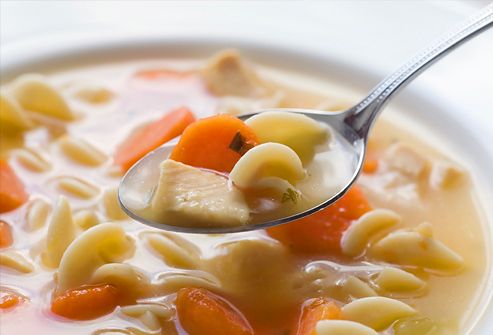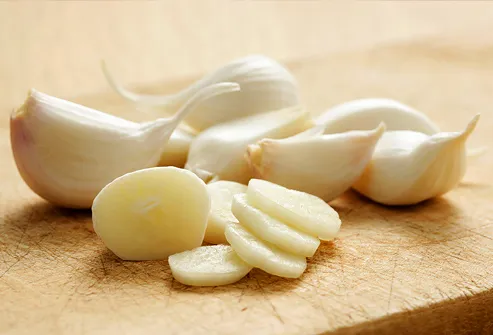When you wake up sneezing, coughing, and have that achy, feverish, can't move a muscle feeling, how do you know whether you have cold symptoms or the flu?
It's important to know the difference between flu and cold symptoms. A cold is a milder respiratory illness than the flu. While cold symptoms can make you feel bad for a few days, flu symptoms can make you feel quite ill for a few days to weeks. The flu can also result in serious health problems such as pneumonia and hospitalizations.
What are common cold symptoms?
Cold symptoms usually begin with a sore throat, which usually goes away after a day or two. Nasal symptoms, runny nose, and congestion follow, along with a cough by the fourth and fifth days. Fever is uncommon in adults, but a slight fever is possible. Children are more likely to have a fever with a cold.
With cold symptoms, the nose teems with watery nasal secretions for the first few days. Later, these become thicker and darker. Dark mucus is natural and does not usually mean you have developed a bacterial infection, such as a sinus infection.
Several hundred different viruses may cause your cold symptoms.
How long do cold symptoms last?
Cold symptoms usually last for about a week. During the first three days that you have cold symptoms, you are contagious. This means you can pass the cold to others, so stay home and get some much-needed rest.
If cold symptoms do not seem to be improving after a week, you may have a bacterial infection, which means you may need antibiotics.
Sometimes you may mistake cold symptoms for allergic rhinitis (hay fever) or a sinus infection. If cold symptoms begin quickly and are improving after a week, then it is usually a cold, not allergy. If your cold symptoms do not seem to be getting better after a week, check with your doctor to see if you have developed an allergy or sinusitis.
What are common flu symptoms?
Flu symptoms are usually more severe than cold symptoms and come on quickly. Symptoms of flu include sore throat, fever, headache, muscle aches and soreness, congestion, and cough. Swine flu in particular is also associated with vomiting and diarrhea.
Most flu symptoms gradually improve over two to five days, but it's not uncommon to feel run down for a week or more. A common complication of the flu is pneumonia, particularly in the young, elderly, or people with lung or heart problems. If you notice shortness of breath, let your doctor know. Another common sign of pneumonia is fever that comes back after having been gone for a day or two.
Just like cold viruses, flu viruses enter your body through the mucous membranes of the nose, eyes, or mouth. Every time you touch your hand to one of these areas, you could be infecting yourself with a virus, which makes it very important to keep hands germ-free with frequent washing to prevent both flu and cold symptoms.
Is it flu or cold symptoms?
How do you know if you have flu or cold symptoms? Take your temperature, say many experts. Flu symptoms often mimic cold symptoms with nasal congestion, cough, aches, and malaise. But a common cold rarely has symptoms of fever above 101 degrees. With flu symptoms, you will probably have a fever initially with the flu virus and you will feel miserable. Body and muscle aches are also more common with the flu. This table can help determine if you have cold or flu symptoms.
Symptoms
Cold
Flu
Fever
Sometimes, usually mild
Usual; higher (100-102 F; occasionally higher, especially in young children); lasts 3 to 4 days
Headache
Occasionally
Common
General Aches, Pains
Slight
Usual; often severe
Fatigue, Weakness
Sometimes
Usual; can last 2 to 3 weeks
Extreme Exhaustion
Never
Usual; at the beginning of the illness
Stuffy Nose
Common
Sometimes
Sneezing
Usual
Sometimes
Sore Throat
Common
Sometimes
Chest Discomfort, Cough
Mild to moderate; hacking cough
Common; can become severe
Complications
Sinus congestion; middle ear infection
Sinusitis, bronchitis, ear infection, pneumonia; can be life-threatening
Prevention
Wash hands often; avoid close contact with anyone with a cold
Wash hands often; avoid close contact with anyone who has flu symptoms; get the annual flu vaccine
Treatment
Decongestants; pain reliever/fever reducer medicines
Decongestants, pain relievers, or fever reducers are available over the counter; over-the-counter cough and cold medicines should not be given to young children; prescription antiviral drugs for flu may be given in some cases; call your doctor for more information about treatment.
Usually, the time of year will give you some sense of what you're dealing with. The standard flu season runs from fall to spring of the next year.
It's important to know the difference between flu and cold symptoms. A cold is a milder respiratory illness than the flu. While cold symptoms can make you feel bad for a few days, flu symptoms can make you feel quite ill for a few days to weeks. The flu can also result in serious health problems such as pneumonia and hospitalizations.
What are common cold symptoms?
Cold symptoms usually begin with a sore throat, which usually goes away after a day or two. Nasal symptoms, runny nose, and congestion follow, along with a cough by the fourth and fifth days. Fever is uncommon in adults, but a slight fever is possible. Children are more likely to have a fever with a cold.
With cold symptoms, the nose teems with watery nasal secretions for the first few days. Later, these become thicker and darker. Dark mucus is natural and does not usually mean you have developed a bacterial infection, such as a sinus infection.
Several hundred different viruses may cause your cold symptoms.
How long do cold symptoms last?
Cold symptoms usually last for about a week. During the first three days that you have cold symptoms, you are contagious. This means you can pass the cold to others, so stay home and get some much-needed rest.
If cold symptoms do not seem to be improving after a week, you may have a bacterial infection, which means you may need antibiotics.
Sometimes you may mistake cold symptoms for allergic rhinitis (hay fever) or a sinus infection. If cold symptoms begin quickly and are improving after a week, then it is usually a cold, not allergy. If your cold symptoms do not seem to be getting better after a week, check with your doctor to see if you have developed an allergy or sinusitis.
What are common flu symptoms?
Flu symptoms are usually more severe than cold symptoms and come on quickly. Symptoms of flu include sore throat, fever, headache, muscle aches and soreness, congestion, and cough. Swine flu in particular is also associated with vomiting and diarrhea.
Most flu symptoms gradually improve over two to five days, but it's not uncommon to feel run down for a week or more. A common complication of the flu is pneumonia, particularly in the young, elderly, or people with lung or heart problems. If you notice shortness of breath, let your doctor know. Another common sign of pneumonia is fever that comes back after having been gone for a day or two.
Just like cold viruses, flu viruses enter your body through the mucous membranes of the nose, eyes, or mouth. Every time you touch your hand to one of these areas, you could be infecting yourself with a virus, which makes it very important to keep hands germ-free with frequent washing to prevent both flu and cold symptoms.
Is it flu or cold symptoms?
How do you know if you have flu or cold symptoms? Take your temperature, say many experts. Flu symptoms often mimic cold symptoms with nasal congestion, cough, aches, and malaise. But a common cold rarely has symptoms of fever above 101 degrees. With flu symptoms, you will probably have a fever initially with the flu virus and you will feel miserable. Body and muscle aches are also more common with the flu. This table can help determine if you have cold or flu symptoms.
Symptoms
Cold
Flu
Fever
Sometimes, usually mild
Usual; higher (100-102 F; occasionally higher, especially in young children); lasts 3 to 4 days
Headache
Occasionally
Common
General Aches, Pains
Slight
Usual; often severe
Fatigue, Weakness
Sometimes
Usual; can last 2 to 3 weeks
Extreme Exhaustion
Never
Usual; at the beginning of the illness
Stuffy Nose
Common
Sometimes
Sneezing
Usual
Sometimes
Sore Throat
Common
Sometimes
Chest Discomfort, Cough
Mild to moderate; hacking cough
Common; can become severe
Complications
Sinus congestion; middle ear infection
Sinusitis, bronchitis, ear infection, pneumonia; can be life-threatening
Prevention
Wash hands often; avoid close contact with anyone with a cold
Wash hands often; avoid close contact with anyone who has flu symptoms; get the annual flu vaccine
Treatment
Decongestants; pain reliever/fever reducer medicines
Decongestants, pain relievers, or fever reducers are available over the counter; over-the-counter cough and cold medicines should not be given to young children; prescription antiviral drugs for flu may be given in some cases; call your doctor for more information about treatment.
Usually, the time of year will give you some sense of what you're dealing with. The standard flu season runs from fall to spring of the next year.




